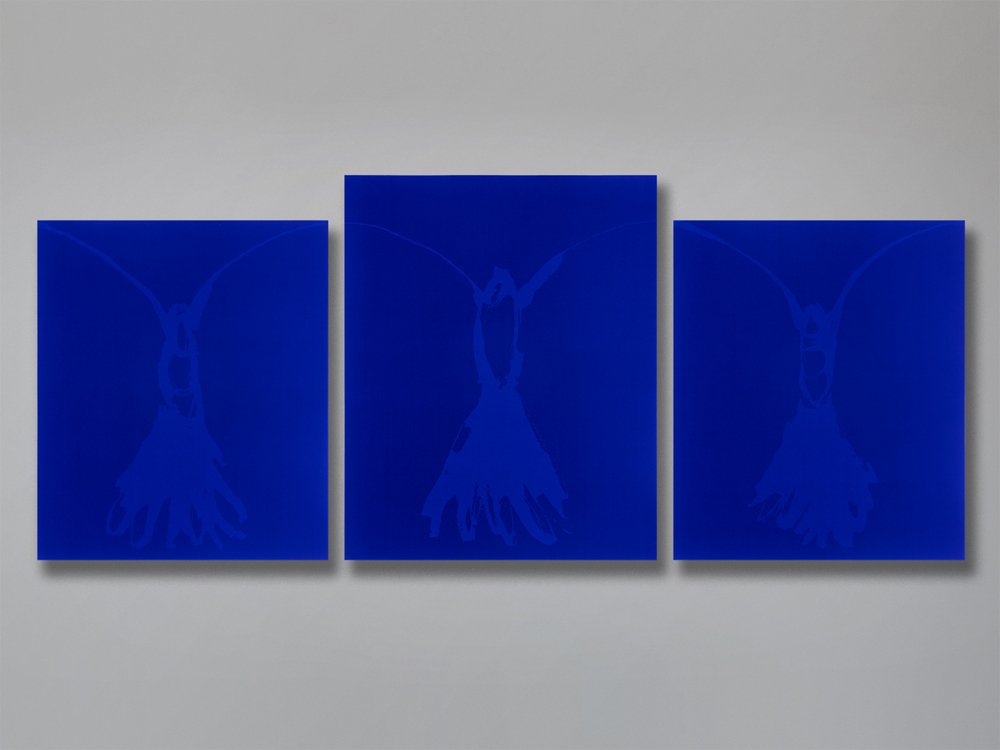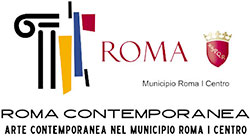On the twelve canvases on display by French artist Pierre-Yves Le Duc, at first one finds the body; however not in the totality of its existence but in the more intimate and erotic part represented by the female sexual organ.
In Le Duc's opus the essence of bodily characterization takes shape through a properly sexual dynamic. Nothing is hidden but everything is manifest, being painted with competence. The brush stroke, quite evident on the canvas, is accurately repeated over and over. Redundant and creative, allusive like oriental calligraphy works, it has a somewhat ecstatic quality, takes up space, and displays a specific style, a power of its own. It refers to that corporeal and erotic matrix but takes on a different essence in form and distinction. The issue it covers is painting in today's world. We are obviously looking at a female sexual organ but at the same time, through the artist's skillful and long work, we are carried into the search dimension proper of art. What should be done today, and how? His is a radical choice: he speaks of eros and keeps the discussion going.
Le Duc veils everything with the blue colour, which leaves much room to imagination. Blue is a symbolic colour: it calls to mind skies and infinite spaces and has a very clear connotation in art. This blue appeals to the eye; if on the one hand it conceals, on the other it definitely leads us straight to the heart of the scandal, represented by the particularly explicit corporeality. The plasticity of the elements – the semantics, in fact – should not mislead: Le Duc's style seeks perfection in repetition, wishing to demonstrate to what extent that primeval corporeality is a Temple to be respected and understood.
Concerning the use of the veil, the artist observes: "With his slashed canvasses Lucio Fontana opened a breach in by-dimensionality and introduced the concept of space. With no wish to place myself on the same level as he, and only because Fontana confessed – perhaps as a joke – that his cuts hinted to the female sex, I will make a quick comparison with my own production. The affinity I feel comes from the perception of the unknown given by Fontana's cuts and the transfiguration of, or distance from, the pictorial object that I produce with my canvasses by using veils. In my research, work is aimed at visual perception. More precisely it points to the way in which, in addition to conveying a meaning through signs, these last as well are conveyed so as to open the door to unprecedented perceptive sensations, if possible. I would like there to be a perfect harmony between the message and its vehicle. A sensory cognition."
"The power of ideas is immense. I firmly believe the value of an idea is far higher than its application in practical life." [Brunello Cucinelli]
"The body is the only temple, but it is easier to have somebody else celebrate the rite." [Pinga Fazioli]
ABOUT THE ARTIST
Pierre-Yves Le Duc was born in France in 1964, lives and works in Naples (Italy).
Solo Exhibitions
2019: "Erector Vesevo", Spazio Nea, Naples
2018: "Andare avanti sino al 'via'!", Spazio Nea, Naples
2017: "Handle with care", Maja Arte Contemporanea, Rome
2012: "Sacred Portal", Bill Lowe Gallery, Atlanta, Georgia (USA)
2011: "Erotoritratti", The King's Palace, Portici (Naples); "Art Hotel", Hotel Mezzatorre, Ischia
2010: "Cleanse yourself, please!", PAN (Palace of the Arts of Naples), Naples
2009: "Motion painting project", Philomarino Contemporary Art Gallery, Naples
2008: "Soap opera", presentation of the "Motion Painting Project", curated by James Putnam, 41 artecontemporanea, Turin
2004: "Soap opera", Changing Role, Naples; "GU", curated by James Putnam – "Meridian Room", National Archeological Museum, Naples
2002: Studio 34, Salerno
1999: Institut Français de Naples "Grenoble", Naples
1998: "Medium", Sala Lazzaretto, Naples
1997: ISSP (Institute of higher studies for Planning), Naples
1996: "I quaranta ladroni", in collaboration with Studio Trisorio Gallery, greek-roman aqueduct of Naples underground, Naples; "Happening", projection of a skeleton on a giant facade of Salita Santa Maria Apparente using a simple slide projector, Naples
1995: "Le nove muse e i nove poeti", curated by Massimo Sgroi, Piazza del Plebiscito, Naples; "Pierre-Yves Le Duc", curated by Massimo Sgroi, Art Now Gallery, Capua (Italy); "Le nove muse e i nove poeti", Villa Gallotti, Naples; "Pierre-Yves Le Duc", Grand Hotel Excelsior, Ischia
1994: "Cenacolo", Piazza San Domenico Maggiore, Naples
1993: "Pierre-Yves Le Duc", Pick & Paik Club, Naples; "Pierre-Yves Le Duc", exhibition dedicated to artist Alfredo Bovio di Giovanni, Pick & Paik Club, Naples


